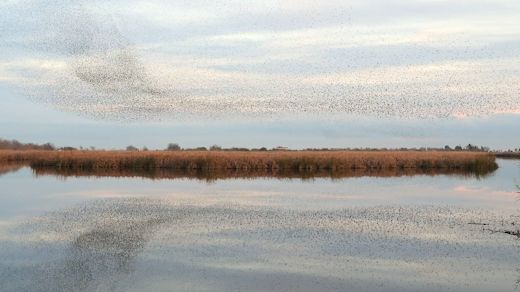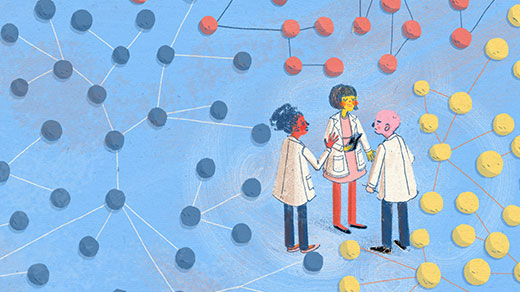What's up in
Network science
Latest Articles
What Makes for ‘Good’ Mathematics?
Terence Tao, who has been called the “Mozart of Mathematics,” wrote an essay in 2007 about the common ingredients in “good” mathematical research. In this episode, the Fields Medalist joins Steven Strogatz to revisit the topic.
Finally, a Fast Algorithm for Shortest Paths on Negative Graphs
Researchers can now find the shortest route through a network nearly as fast as theoretically possible, even when some steps can cancel out others.
Researchers Achieve ‘Absurdly Fast’ Algorithm for Network Flow
Computer scientists can now solve a decades-old problem in practically the time it takes to write it down.
She Finds Clues to Future Sustainability in Old Food Webs
By reconstructing prehistoric food webs and analyzing the diverse interactions of humans with other species, the ecologist Jennifer Dunne is developing a new understanding of sustainability through network science.
Smarter Parts Make Collective Systems Too Stubborn
As researchers delve deeper into the behavior of decentralized collective systems, they’re beginning to question some of their initial assumptions.
How Network Math Can Help You Make Friends
Studying the structure of existing friendships in your community can help you forge the best connections when forming a new circle of friends.
Scant Evidence of Power Laws Found in Real-World Networks
A new study challenges one of the most celebrated and controversial ideas in network science.
Simpler Math Tames the Complexity of Microbe Networks
The dizzying network of interactions within microbe communities can defy analysis. But a new approach simplifies the math and makes progress possible.
A Physicist Who Models ISIS and the Alt-Right
The rise of new extremist groups has served as both an impetus and test-case for Neil Johnson’s models of terrorism and insurgency.








